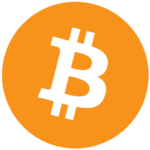The Internet of Money Volume I Summary
This is The Internet of Money Volume I Summary by Peter Conley. It is a review of the book, The Internet of Money – Volume I by Andreas Antonopoulos.

NEGATIVE NEW TECH PROPAGANDA ISN’T NEW
In this Internet of Money Book Review, I quickly realized new technologies have always been criticized when they’ve been brought to the market. This is not new. This happened with the printing press, the radio, electricity, the car, the internet, and so many other major inventions. They all pull out the same critiques every time. Bitcoin is no exception.
The propaganda never stops and it’s always the same: this tech is for criminals, this tech is only for rich hobbyists and will never be available to the common man, this won’t scale, this can’t work.
INFRASTRUCTURE INVERSION
Paradigm-shifting technology almost always gets built on and distributed through the existing old networks. Then it becomes so valuable the market starts building its own infrastructure.
Examples:
- Internet was first on dial-up modems, through the telephone lines, then the fiber-optics network was built
- Cars first drove on streets for horses, then paved roads were created
- Electricity first used the same infrastructure built for gas lanterns and internal combustion engines, then an entire grid was laid down for it
Once the new infrastructure is created something profound happens. A technological explosion.
Without the paved roads, we wouldn’t have so many bikes, scooters, rollerblades, Segways, etc. The telephone lines could have never supported the podcast network, YouTube, Spotify, Twitter, and the hundreds of other media platforms built on top of the internet’s infrastructure.
The same will be true for bitcoin and the financial infrastructure.
DUMB NETWORKS VS. SMART NETWORKS
You can build the foundation of a network on a simple open-source protocol like Unix, or it can be built on a complex, protected network like the IBM operating system for computers.
There are permissionless networks and permission-based networks.
Then “dumber” and more open the base/foundational layer is the more engineers will build on top of that protocol/network.
Highly complex, permission-based, closed networks can not out-compete innovation on an open-sourced, permissionless network.
They never have and they never will.
ANALOG CLOSED NETWORKS CREATE PREDATORY COMPANIES
When the system/network is closed (like the current financial rails) it creates a breeding ground for parasitic and predatory companies.
Western Union takes 9% of all remittance payments.
Overdraft fees are over a 10 billion dollar market. Source: https://www.forbes.com/advisor/personal-finance/how-to-prevent-overdraft-fees/
Open networks typically solve this. Western Union can’t compete with bitcoin, their business model is already dead, they just don’t know it yet. Banks can’t compete with bitcoin just like traditional TV Stations like MSNBC & Fox News can’t compete with YouTube.
PROGRAMMABLE MONEY
Bitcoin is software as money, it is programmable, and it is smart. The possibilities, as a result, are endless.
Legal congrats can be converted to algorithmic contracts. Escrow accounts will be converted entirely to open-source software programs.
MONEY IS AS OLD AS CIVILIZATION
Money has been around as long as “civilization”. Money is foundational to every religion, culture, feudal state, nation-state, and any other organization that has existed.
It is the foundational technology upon which we build. More foundational than the wheel, books, or electricity.
Without it, we are confined to the limits of a barter-based system.
CLIENT-SERVER ARCHITECTURE IS A MYTH
In the financial world, we don’t have a client-server relationship with our data.
It’s actually more like master-slave architecture. At the end of the day, the banks own your USD. You can only access it if they give you permission to do so. They can freeze your logins when they want. They can seize your money when they want.
Not only do you not have “root access”, but your “read-only” access is also permission-based. It can be taken away.
DEMOCRATIZING BANKING
Billions of people don’t have access to bank accounts, with bitcoin they now have access to a full-fledged bank in their pocket.
Not just a bank account, but a full bank. Every individual with a smartphone can spin up countless wallets. Every individual can become a lending platform.
This is as revolutionary as every individual being able to be a media company with the advent of the internet.
BITCOIN HAS TERRIBLE METAPHORS
Bitcoin could have only been named by a developer. The names and metaphors that have evolved with this network are very misleading and inaccurate.
There are no coins, there are ledger entries that are infinitely divisible. Wallets aren’t actually wallets, a better metaphor would have been a keychain because you can copy keychains and distribute them widely.
It’s difficult to design good metaphors for bitcoin because there are no parallels. We’ve never done anything like this before and you’re trying to abstract computer science.
BITCOIN CHANGES WHAT IS POSSIBLE TO BUILD
When the internet was invented people thought it would just be a fancier the telephone, they had no awareness of the possibilities of applications that could be built on top of it.
The internet dropped the cost of transmitting data to zero. Bitcoin is going to drop the cost of transmitting value to zero. The applications and institutions that can be built on top of this will be profound, we can’t really understand what is possible yet because of this invention.
Personhood was required to transact/own money, now the software can own money. What does Andreas mean by this?
Let’s take a car as an example.
Combine Uber, Bitcoin, and a self-driving car – A car now becomes self-owned without needing a corporation. With bitcoin, “car hood” is now possible.
INTERFACES & DESIGN NEEDED FOR THE COMMON PERSON
As the network grows, more easily accessible applications and hardware will be built on top of it to access it – just like the internet.
In order to access the internet in 1992, you had to write terminal commands i.e. you needed to know a computer language just to use it.
There was a 20-year gap between Andreas sending an email and his mom sending an email – his mom needed the simplicity of the iPad.
Bitcoin is the exact same. Before exchanges, you had to run a node or be a miner to get bitcoin. It was super technical. All you need now is a credit card.
BITCOIN = MONEY AS A MEDIUM
With Bitcoin, there doesn’t need to be a uniform medium to transact with the network.
You can send a transaction via HAM radio, encode it in a tweet, and do it through an exchange.
When you remove the constraints of one medium, like moving from network TV to YouTube, you unlock human creativity.
You can encode a bitcoin transaction in virtually any form of communication known to man as long as it gets translated to the network and finds a connected node.
WE CAN’T SCALE – HEARD IT ALL BEFORE
The author was there for the infancy of the internet and witnessed it firsthand as a computer scientist. He saw it grow into the all-encompassing monster it is today. He heard the sentence “it can’t scale” literally every step of the way.
Many people, time after time, wrote Ph.D. theses on how it couldn’t scale.
At first chat rooms couldn’t scale because of the data storage, then it was the problem with spam, then email attachments couldn’t scale, then websites wouldn’t scale, then a video couldn’t scale.
On and on every feature we now take for granted was deemed impossible – by people in the industry, not nobodies, but by the actual computer scientists on the front lines.
This time isn’t different. The lightning network is scaling Bitcoin, multi-signature wallets are scaling Bitcoin, hardware wallets are scaling Bitcoin, and on and on.
This network is growing just like the internet.
TL;dr Bitcoin is inevitable.
Related Books
The Internet of Money Volume I Quotes
“At the end of the day, bitcoin is programmable money. When you have programmable money, the possibilities are truly endless.”
“You cannot un-invent this technology [bitcoin]. You cannot turn this omelet back into eggs.”
““Bitcoin is a dumb network supporting really smart devices, and that is an incredibly powerful concept because bitcoin pushes all of the intelligence to the edge. “
“Bitcoin represents a fundamental transformation of money. An invention that changes the oldest technology we have in civilization.”
“As the adage of the entire internet once went, “I just replaced your entire industry with 100 lines of Python code,” that’s exactly what we’re doing with bitcoin.”
-- Andreas M. Antonopoulos
The Internet of Money Volume I Lessons
- Infrastructure Inversion is when new innovative technologies initially get built on top of old infrastructure, then eventually take over the whole network (horses -> cars & phone lines ->)
- Bitcoin’s development parallels the internet, in terms of negative PR and persistent growth
- Bitcoin is money’s version of UNIX to operating systems. It’s a “dumb & open” system that allows for permissionless development on top of its network.
- Closed analog permission-based systems like IBM’s operating system or the current SWIFT financial system breed predatory businesses
- Negative press towards new technology is nothing new, the critics don’t matter, what does matter is bitcoin’s adoption rate
- When money becomes pure software, radical changes and innovations are possible like cars being able to own and operate themselves.
- UI & UX for bitcoin needs to mature in order to reach mass adoption. Consider how hard it was to use email in 1993 — bitcoin is very similar. Eventually, applications will be built on top of bitcoin which allows even the most technically illiterate elderly person to use it.
Affiliate Link Disclosure
This post contains affiliate links. If you use these links to buy something we may earn a commission. Thanks.”







